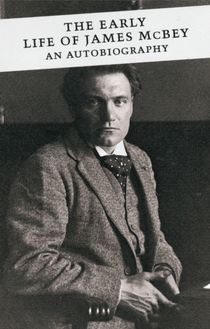-
 Univers
Univers
-
 Ebooks
Ebooks
-
 Livres audio
Livres audio
-
 Presse
Presse
-
 Podcasts
Podcasts
-
 BD
BD
-
 Documents
Documents
-
- Cours
- Révisions
- Ressources pédagogiques
- Sciences de l’éducation
- Manuels scolaires
- Langues
- Travaux de classe
- Annales de BEP
- Etudes supérieures
- Maternelle et primaire
- Fiches de lecture
- Orientation scolaire
- Méthodologie
- Corrigés de devoir
- Annales d’examens et concours
- Annales du bac
- Annales du brevet
- Rapports de stage
La lecture à portée de main
Vous pourrez modifier la taille du texte de cet ouvrage
Découvre YouScribe en t'inscrivant gratuitement
Je m'inscrisDécouvre YouScribe en t'inscrivant gratuitement
Je m'inscrisEn savoir plus
Vous pourrez modifier la taille du texte de cet ouvrage
En savoir plus

Description
Informations
| Publié par | Canongate Books |
| Date de parution | 01 juillet 2010 |
| Nombre de lectures | 1 |
| EAN13 | 9781847678089 |
| Langue | English |
Informations légales : prix de location à la page 0,0400€. Cette information est donnée uniquement à titre indicatif conformément à la législation en vigueur.
Extrait
Contents
Introduction
1. The Medal of Brigadier Gerard
2. How the Brigadier Held the King
3. How the King Held the Brigadier
4. How the Brigadier Slew the Brothers of Ajaccio,
5. How the Brigadier Came to the Castle of Gloom
6. How the Brigadier Took the Field Against the Marshall Millefleurs.
7. How the Brigadier was Temped by the Devil.
8. How the Brigadier Played for a Kingdom
EDITOR’S NOTE
The text of this volume in the main is that originally passed by Arthur Conan Doyle for publication in the Strand where these stories appeared in the order assigned here: the first in the issue for December 1894, the next six in those for April to September 1895 inclusive, the last in that for December 1895. The reader thus can conveniently judge how Conan Doyle initially conceived his Brigadier, and how he developed the creation and his world with increasing sophistication and historical craft. Gerard evidently narrates the events of the first story during Napoleon’s lifetime, probably before his abdication in April 1814 or possibly between his return and Waterloo, whereas the other stories are supposedly delivered at a much later date (the 1840s for the rest of the Exploits , the 1850s and perhaps later for the Adventures ), The Exploits of Brigadier Gerard was originally published in book form by George Newnes, publisher of the Strand , on 15 February 1896, with its stories reordered in historical sequence, thus necessitating a few deletions, notably the first sentence on p. 26, and the first five sentences on p. 74 (the loss of the latter eliminating a comic gem). I have retained some minor revisions in the book-text.
I have added head-notes to each of the stories, to supply the chronology of the Exploits and add an additional whiff of historical context.
O.D.E.
Introduction
Readers of Marbot, de Gonneville, Coignet, de Fezensac, Bourgogne, and the other French soldiers who have recorded their reminiscences of the Napoleonic campaigns, will recognise the fountain from which I have drawn the adventures of Etienne Gerard. It was an extraordinary age and produced extraordinary types. For twenty-three years France was at war, with one short breathing space of a few months. To Frenchmen war had become the normal and natural state. Children were born in war, grew up in war, fought in the war, and died in the same endless war without ever knowing what peace was like. Yet, as we read the memoirs of these fighting men, or if we consult the descriptions left by those who, like our own Napier, had met them in the field, we find that they were by no means brutalised by this strange experience, and that among them were knightly and gentle souls, playfully gallant, whose actions recall the very spirit of chivalry. A better knight than Marbot never rode in the lists, and what shall we say of that dragoon, described by Napier, who raised his sword, saluted and passed, on perceiving that his English antagonist in a fierce mélée had only one arm, or that madcap officer of cavalry who charged the whole English army single-handed. These are the men, glorious in their youth, and pathetic in their useless and poverty-stricken old age, of whom I desired to draw a type, noble, débonnaire , capable, self-sufficient, human, and garrulous. I may add that, light as the sketches are, there has been some attempt to keep the military and historical detail correct.
This was Arthur Conan Doyle’s preface to The Exploits of Brigadier Gerard , when the Author’s Edition of his works was published on 16 November 1903. The first book publication, from George Newnes, had been on 15 February 1896, following the appearance of individual exploits in Newnes’s Strand magazine for December 1894, April through September 1895, and December 1895. Ironically the Author’s Edition Exploits emerged two months after Newnes’s book publication of the only other collection of Gerard stories, The Adventures of Gerard , but this was far too short an interval to permit its inclusion (save for one story) in the Author’s Edition. The Adventures , fresher in the author’s mind as he was writing his preface, accounts for his inclusion of a source not available for the Exploits , the Mémoires of Sergeant Adrien Jean Baptiste François Bourgogne, published in Paris in 1898. Bourgogne (1785–1867) was in any case purely concerned with the Russian Campaign of 1812, which is only glancingly noticed in its conclusion in the Exploits , and while ACD drew important lessons from the Journal de la Campagne de Russie by Raymond Aymery Philippe Joseph, Due de Montesquiou-Fezensac (1784–1867), its preoccupations were likewise peripheral to the Exploits though vital to the Adventures . What had launched Conan Doyle’s first series of Napoleonic short stories supposedly narrated by his Gerard, were primarily the recollections of Jean Baptiste Antoine Marcellin, Baron de Marbot (1782–1854), of Aymar Olivier Le Harivel de Gonneville (1783–1872), and of Jean-Roch Coignet (1776–1860?).
ACD’s Through the Magic Door , published in 1907, is a seminal positive criticism and celebration of his favourite works (some of its material reworked from articles in 1894, the year of Gerard’s serialised Exploits ). The reader is supposedly standing with the enthusiastic author before one of his bookshelves:
Here is Marbot at this end the first of all soldier books in the world. This is the complete three-volume French edition, with red and gold cover, smart and débonnaire like its author. Here he is in one frontispiece with his pleasant, round, boyish face, as a Captain of his beloved Chasseurs. And here in the other is the grizzled old bull-dog as a full general, looking as full of fight as ever…. the human, the gallant, the inimitable Marbot! His book is that which gives us the best picture by far of the Napoleonic soldiers, and to me they are even more interesting than their great leader, though his must ever be the most singular figure in history. But those soldiers, with their huge shakeos, their hairy knapsacks, and their hearts of steel what men they were! …
It must be confessed that Marbot’s details are occasionally a little hard to believe. Never in the pages of Lever has there been such a series of hairbreadth escapes and dare-devil exploits. Surely he stretched it a little sometimes. You may remember his adventure at Eylau … how a cannon-ball, striking the top of his helmet, paralyzed him by the concussion of his spine; and how, on a Russian officer running forward to cut him down, his horse bit the man’s face nearly off. This was the famous charger which savaged everything until Marbot, having bought it for next to nothing, cured it by thrusting a boiling leg of mutton into its mouth when it tried to bite him. It certainly does need a robust faith to get over these incidents. And yet, when one reflects upon the hundreds of battles and skirmishes which a Napoleonic officer must have endured how they must have been the uninterrupted routine of his life from the first dark hair upon his lip to the first grey one upon his head, it is presumptuous to say what may or may not have been possible in such unparalleled careers. At any rate, be it fact or fiction fact it is, in my opinion, with some artistic touching up of the highlights there are few books which I could not spare from my shelves better than the memoirs of the gallant Marbot.
I dwell upon this particular book because it is the best; but take the whole line, and there is not one which is not full of interest. Marbot gives you the point of view of the officer. So does De Ségur and De Fezensac and Colonel Gonville, each in some different branch of the service. But some are from the pens of the men in the ranks, and they are even more graphic than the others. Here, for example, are the papers of good old Coignet, who was a grenadier of the Guard, and could neither read nor write until after the great wars were over. A tougher soldier never went into battle.
In 1948 there was published a little biography of Marbot by Vyvyan Ferrers. It shares with John Bunyan’s Pil grim’s Progress , Oscar Wilde’s De Profundis and P. G. Wodehouse’s Money in the Bank the distinction of having been written in prison, for Ferrers had been British Consul at St Malo when the Nazis took it. Before his imprisonment, Ferrers had been reading the Marbot Mémoires . Now he based his book on its memory. His manuscript was rescued after the war and returned to him. He called it The Brigadier and this was how the imprisoned consul began his book:
Conan Doyle has written a series of entertaining short stories of which the central figure is a dashing young French hussar, who, in the course of the Napoleonic Wars goes through a number of hair-raising adventures in every part of Europe. The hero is both lovable and laughable. Gallant and gay, valiant and vain, he combines two characters which are sometimes supposed to be incompatible. He is both a braggart and a brave man….
It is evident that by the word ‘brigadier’ the author intended to signify the rank which the French call général de brigade . Unfortunately, there is also in the French service a rank which bears the designation brigadier . It is a very lowly rank indeed: it is approximately equivalent to ‘lance-corporal’. This must have been pointed out to the author while the stories were appearing one by one. When they were collected and republished in book form an explanatory footnote was added. The word ‘brigadier’ is to be understood (it says) in the English sense. This is all very well, but the reader must be permitted to wonder whether the writer, when he conferred that rank upon his hero, was aware that it has a French sense also, and what that sense is.
And Ferrers then introduces his own subject, Marcellin Marbot, ‘a real officer who was undoubtedly the author’s model’. He was not alone in this identification. Andrew Lang, reviewing the Author’s Edition anonymously in the Quarterly
-
 Univers
Univers
-
 Ebooks
Ebooks
-
 Livres audio
Livres audio
-
 Presse
Presse
-
 Podcasts
Podcasts
-
 BD
BD
-
 Documents
Documents
-
Jeunesse
-
Littérature
-
Ressources professionnelles
-
Santé et bien-être
-
Savoirs
-
Education
-
Loisirs et hobbies
-
Art, musique et cinéma
-
Actualité et débat de société
-
Jeunesse
-
Littérature
-
Ressources professionnelles
-
Santé et bien-être
-
Savoirs
-
Education
-
Loisirs et hobbies
-
Art, musique et cinéma
-
Actualité et débat de société
-
Actualités
-
Lifestyle
-
Presse jeunesse
-
Presse professionnelle
-
Pratique
-
Presse sportive
-
Presse internationale
-
Culture & Médias
-
Action et Aventures
-
Science-fiction et Fantasy
-
Société
-
Jeunesse
-
Littérature
-
Ressources professionnelles
-
Santé et bien-être
-
Savoirs
-
Education
-
Loisirs et hobbies
-
Art, musique et cinéma
-
Actualité et débat de société
- Cours
- Révisions
- Ressources pédagogiques
- Sciences de l’éducation
- Manuels scolaires
- Langues
- Travaux de classe
- Annales de BEP
- Etudes supérieures
- Maternelle et primaire
- Fiches de lecture
- Orientation scolaire
- Méthodologie
- Corrigés de devoir
- Annales d’examens et concours
- Annales du bac
- Annales du brevet
- Rapports de stage














